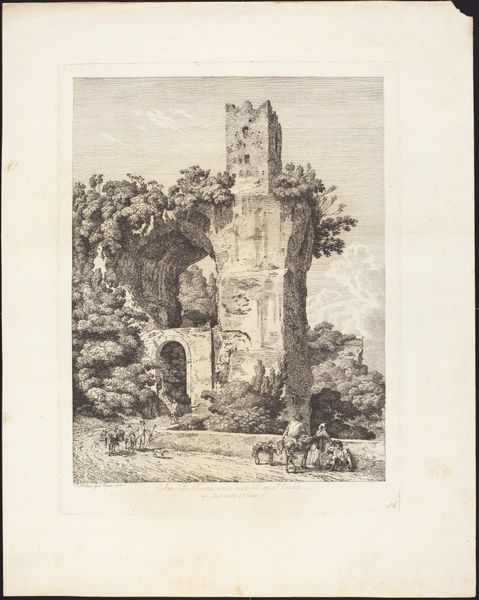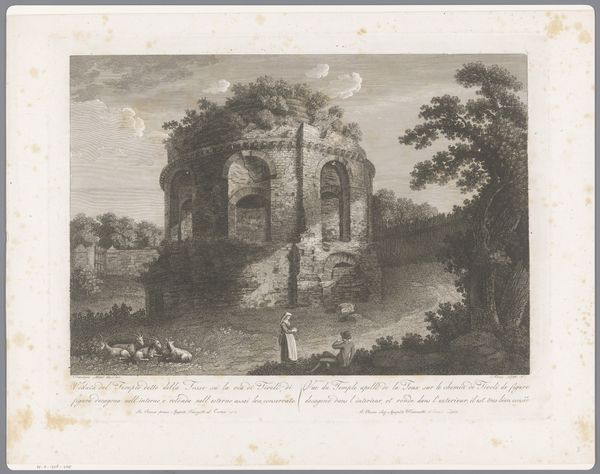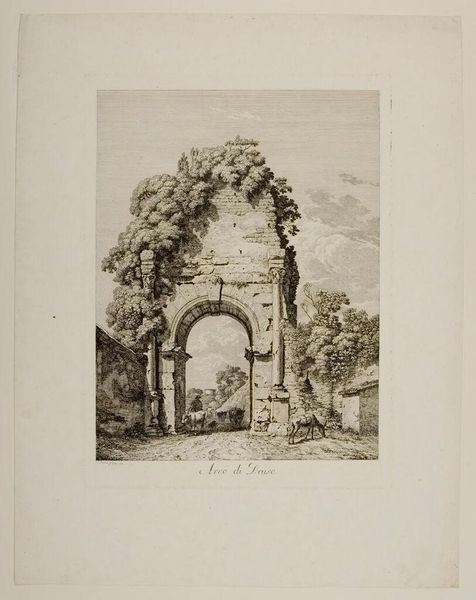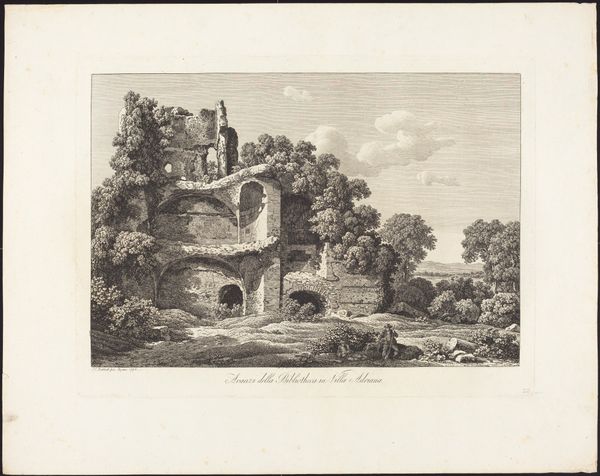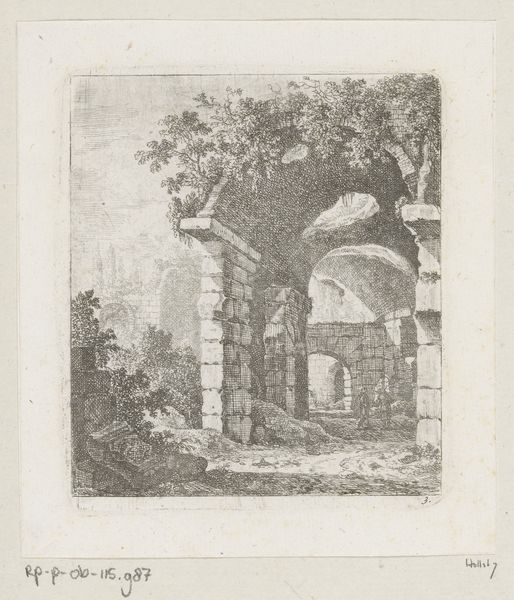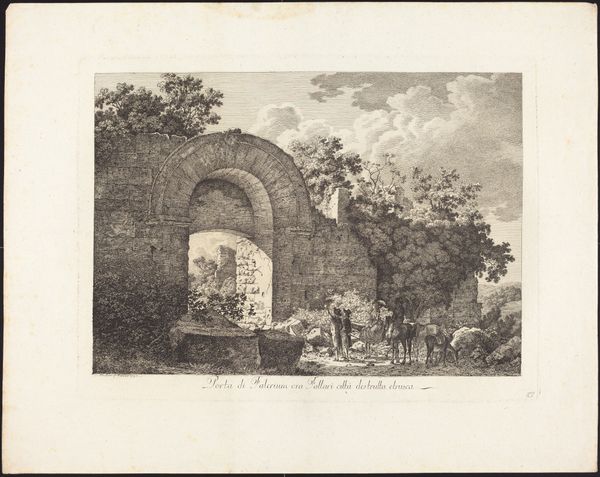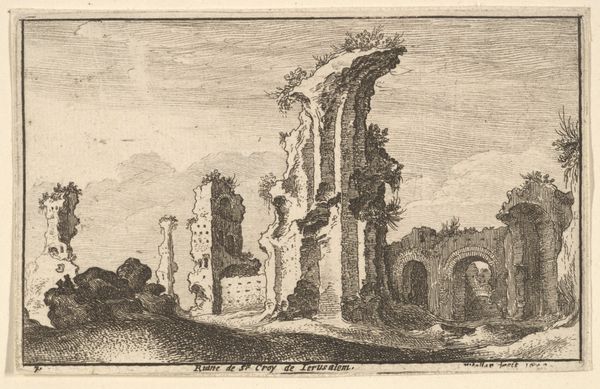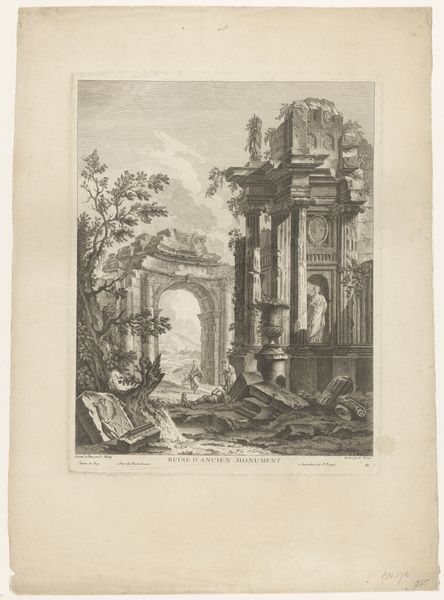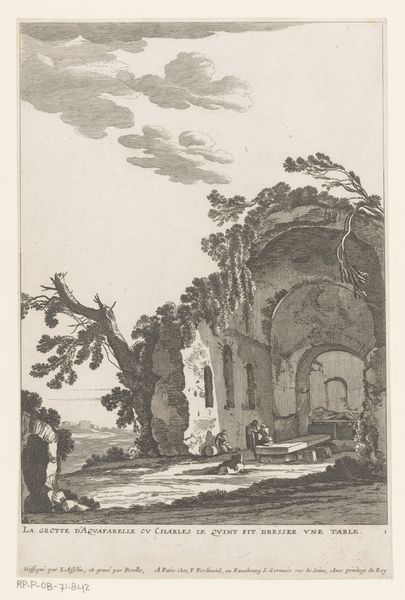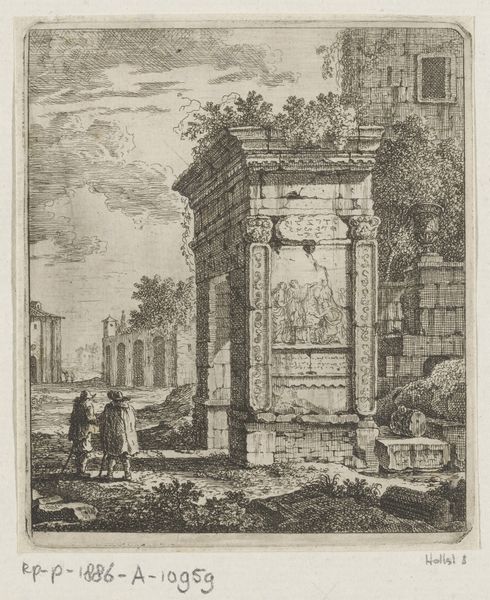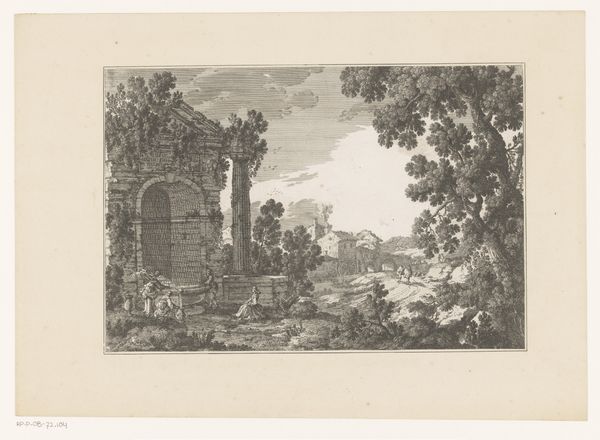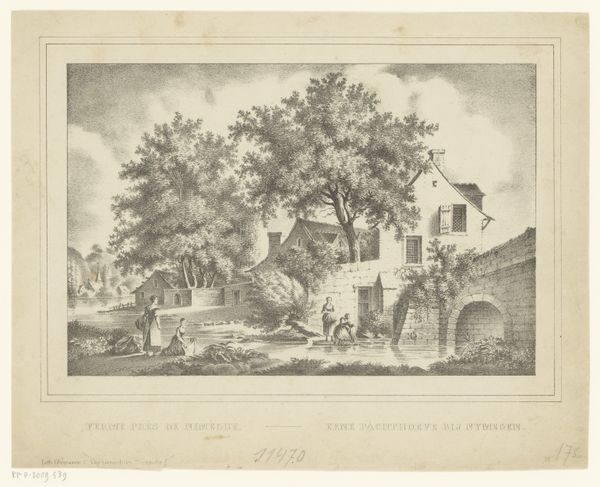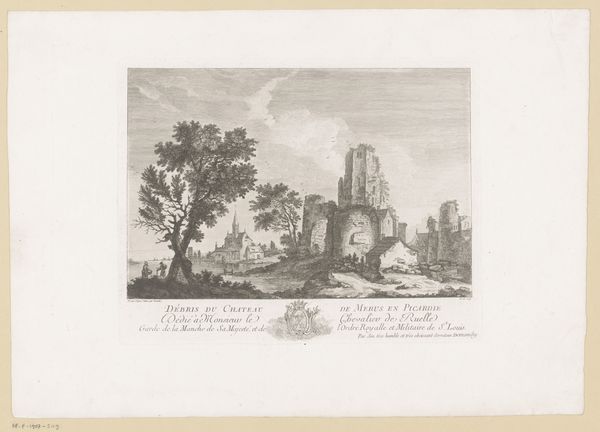
print, engraving
# print
#
landscape
#
romanesque
#
cityscape
#
engraving
Dimensions: plate: 37.6 x 28.2 cm (14 13/16 x 11 1/8 in.) sheet: 49 x 39.2 cm (19 5/16 x 15 7/16 in.)
Copyright: National Gallery of Art: CC0 1.0
Curator: Before us we have Jacob Wilhelm Mechau's "Arco di Druso," an engraving dating to 1794. What strikes you upon viewing it? Editor: I'm immediately drawn to the arch's melancholic grandeur. The delicate lines of the engraving capture a profound sense of historical weight, yet the encroaching foliage suggests nature reclaiming what time and empire have left behind. Curator: Indeed. Considering its history, Roman arches served not merely as aesthetic embellishments but as potent symbols of imperial power and victory. Here, we see the subversion of that intended effect as its fragmented architecture serves as a poignant reflection on collapsed hegemonies. This provokes a meditation on what survives beyond structural disintegration. Editor: Absolutely, and the plants become an active visual metaphor for nature as a persistent, leveling force against human structures of control. Notice, too, how the muted tones enhance that solemn quality—a stark visual reminder of human attempts at permanence against nature’s slow yet inevitable creep. In iconographic terms, the arch represents the threshold: transition, crossing, legacy, which are themes enhanced by its ruinous state. Curator: Let’s consider the people here—those seemingly undisturbed figures casually passing beneath what remains of that vaunted dominion. Mechau places marginalized populations in conversation with decaying monumentality, prompting dialogue about whose history truly prevails and whose memories linger in the face of ruin. This suggests that the enduring impacts on lived experience, on communities and daily existence, transcend architectural feats. Editor: I agree, seeing humanity juxtaposed so seamlessly gives this depiction its incredible evocative power. It presents a continuity and interplay between grand histories and the persistence of life itself. It compels reflection on time’s passage, which echoes, perhaps even critiques, concepts of triumphalism so often associated with these architectural constructions. Curator: Yes, seeing these lasting imprints offers complex understandings of change. The symbolic value, for me, lies not merely in commemorating a lost empire, but illuminating resilience—social, ecological, historical—against all odds. Editor: It becomes a reflection on cyclical themes and a symbol of hope amidst ruin—nature's rebirth and a community's persistence, even under the shadows of former empires. What a wonderfully insightful demonstration of history and symbol!
Comments
No comments
Be the first to comment and join the conversation on the ultimate creative platform.
